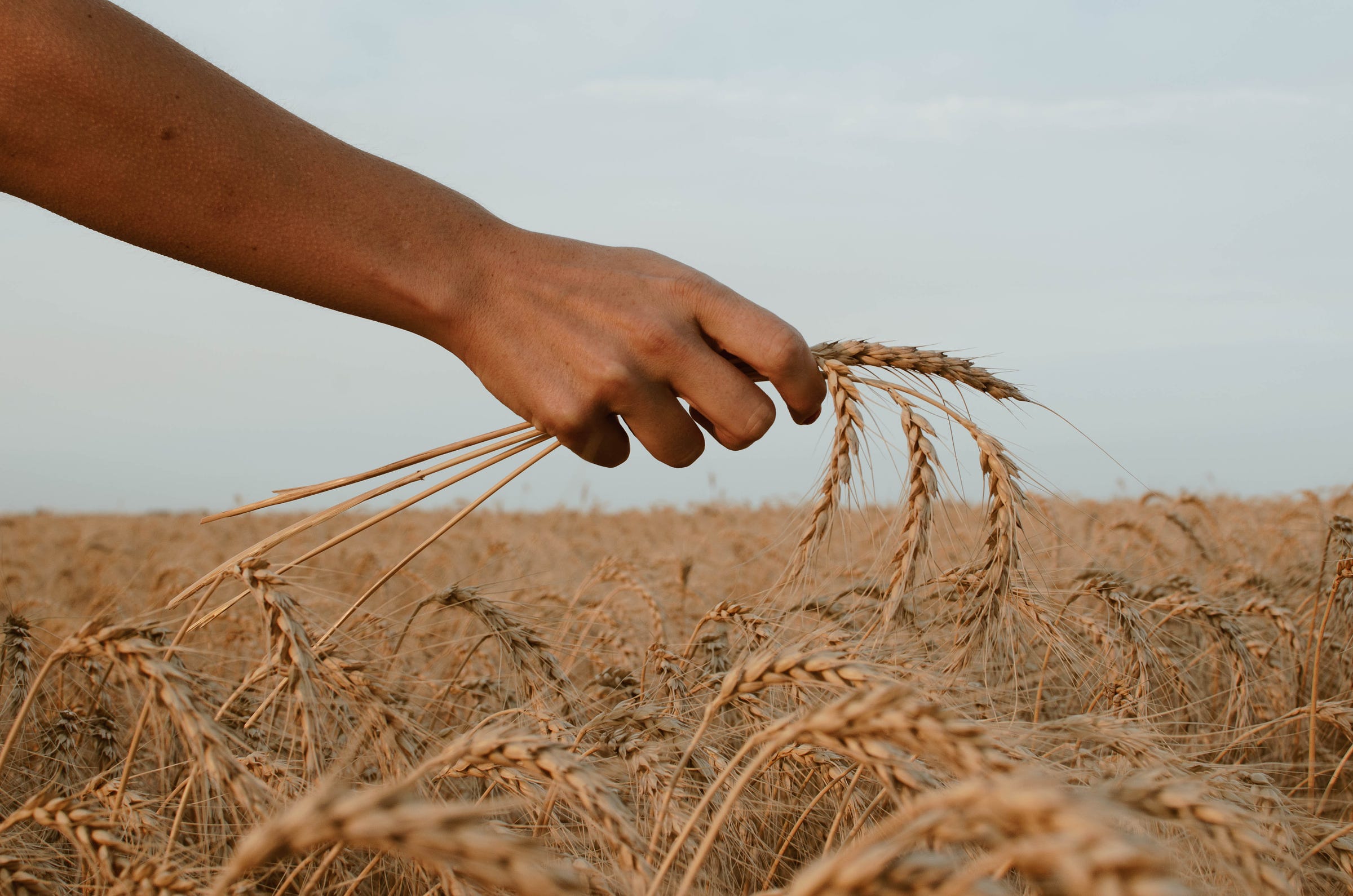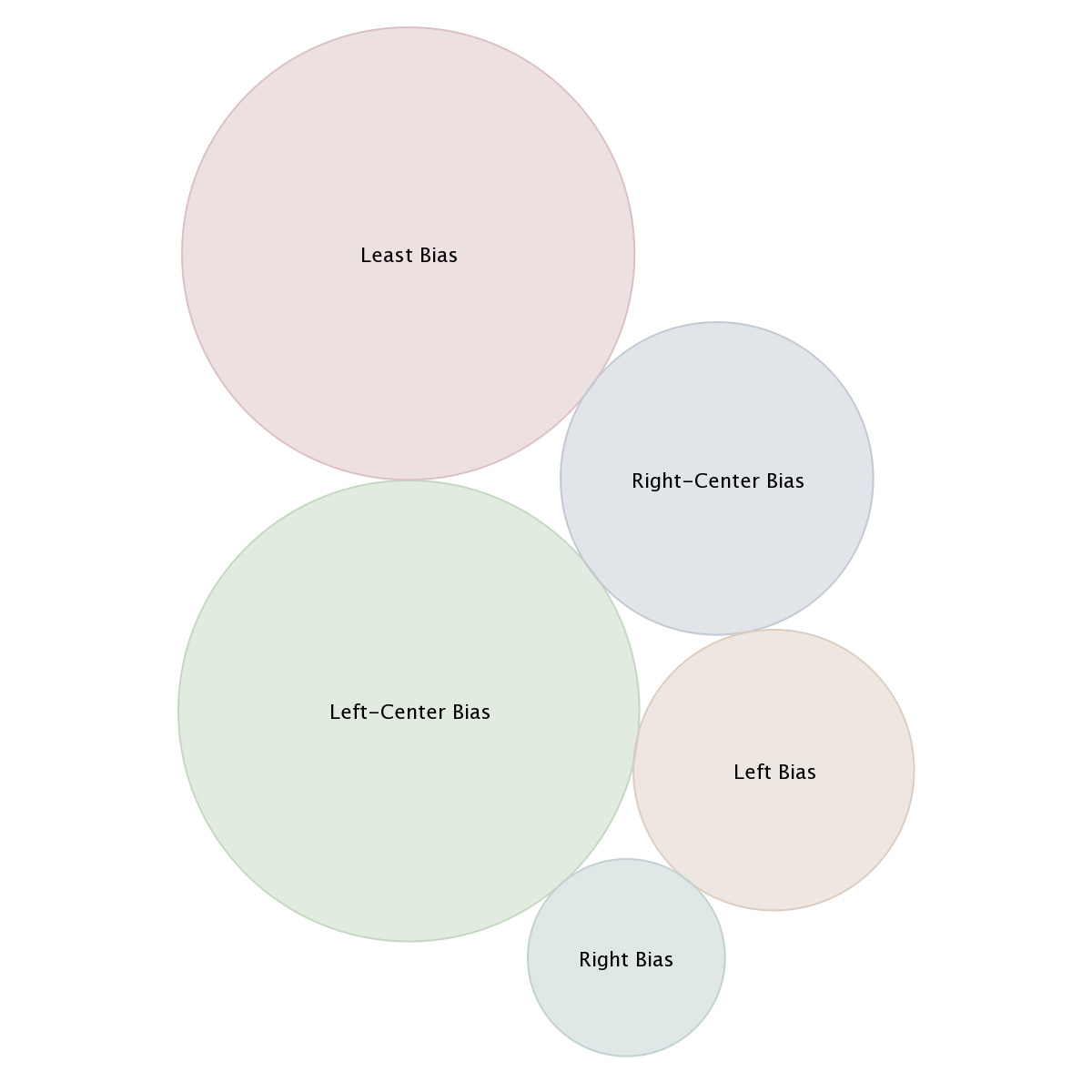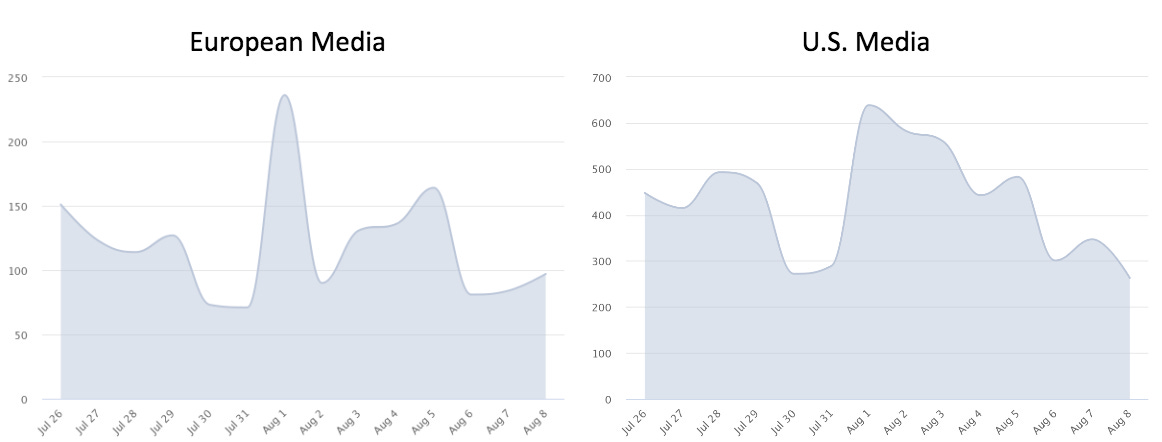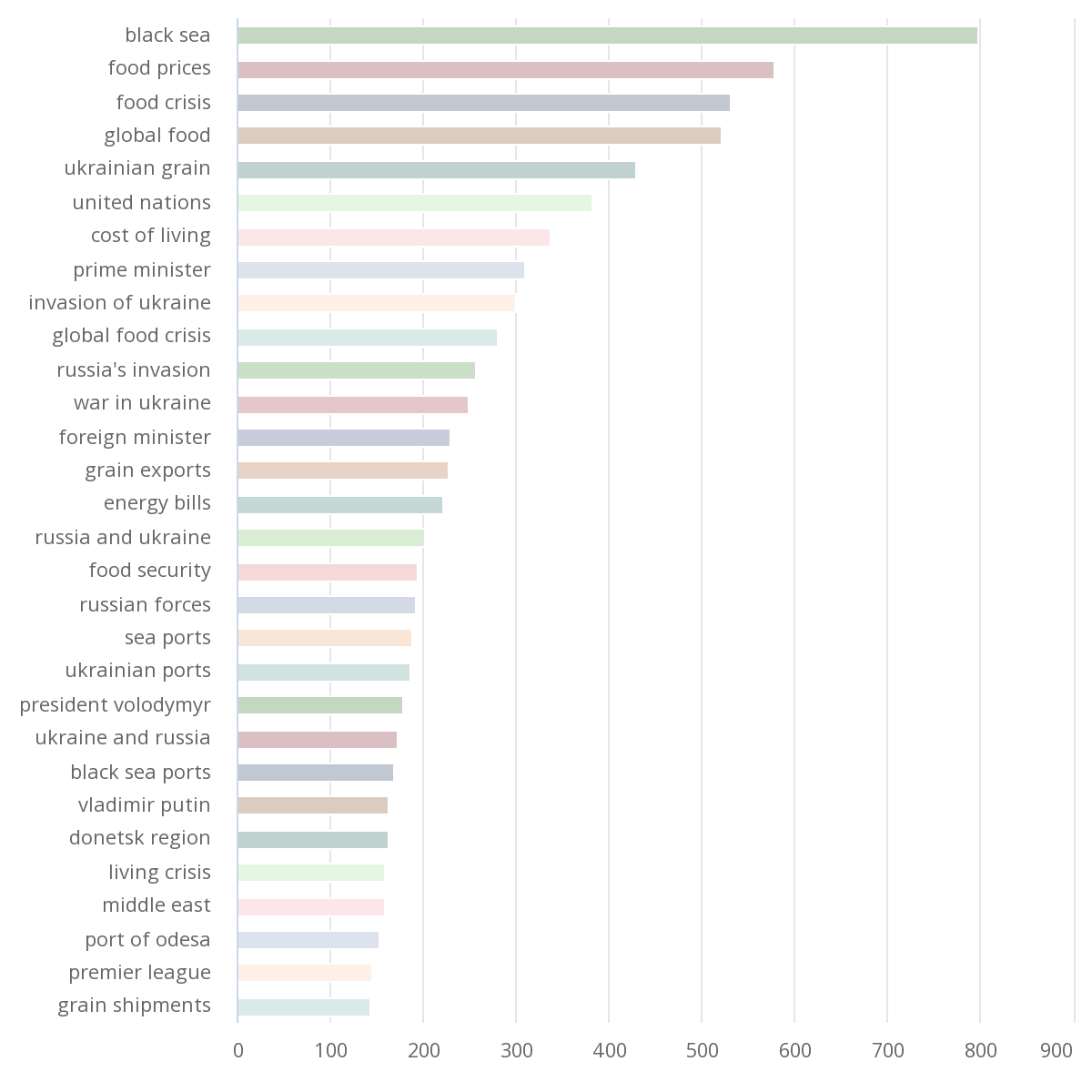
While food prices and food insecurity have been on the rise for years, the war in Ukraine has accentuated this problem more than ever. From coverage of grain shipments to the rising grocery store costs, the narrative has centered around Russia and Ukraine’s role in the global food crisis.
Top amplifiers:
U.S. Media and European Media have covered this narrative extensively, with 900 sources pushing 8,700 different stories on the subject.
In U.S. Media, a pretty significant liberal bias is present, with over twice as many outlets with a left-leaning bias covering the story than right-leaning. The states covering the crisis reflect a left-leaning bias as well. California, New York, and Illinois are some of the bluest States in the U.S. and have covered the topic more than any other state. In Europe, media coverage was somewhat evenly distributed among countries.
U.S. Media coverage top amplifiers are The Washington Times, Eurasia Review, The Hill, and CNN. In Europe, Business Insider, Reuters, The Guardian, Radio Free Europe, EURACTIV, and The Independent have been the most active in writing about the crisis.

Ukraine and Russia:
While the economic issues that the U.S. and Europe struggle with vary, the ongoing food crisis has been difficult to ignore for both. Taking into account keyword mentions, it is clear where fingers are being pointed. Mentions of “Black Sea” (where Ukraine is shipping wheat from), “Ukrainian grain,” “Russia’s invasion”, and even “Vladimir Putin” are among the most prevalent when it comes to coverage of rising food prices.
Ukraine and Russia are some of the largest suppliers of grain and other agricultural products worldwide. According to the World Food Programme, Russia and Ukraine together accounted for 30% of globally traded wheat, 20% of maize, and 70% of sunflower supplies. Coverage of the food crisis narrative has coincided with crucial dates as Ukraine attempts to get grain shipments back on track.

Some of the key dates are as follows:
July 28th: Data from the Commerce Department was released, revealing a second consecutive fiscal quarter of GDP decline. This report did not do much to quell fears of price premiums at the grocery store.
August 1st: This is the same day the first ship left Ukraine since the Russian invasion of Ukraine. The shipment comes following a grain deal between the two countries that allows Ukraine to resume shipments out of the Black Sea.
August 5th: Following the grain deal, Putin met with the President of Turkey, Recep Tayyip Erdogan, with one of the talking points regarding the grain deal. Additionally, more ships departed from Ukraine, and the U.S. agreed to send another $150 million for the food crisis in Africa.
These dates account for many of the most significant talking points surrounding the food crisis conversation, making it clear that developments in Ukraine have been the most important factor in the narrative. Keywords in European media make this emphasis even more clear.

Hurting at home:
It may be difficult to keep up with every development in Ukraine, but it is impossible to ignore its impact on your wallet. While COVID, global conflicts, environmental issues, and a myriad of other factors have caused prices to rise, the war has in many ways pushed the food supply problems over the edge.
The media is covering the problems Americans and their wallets face at home. “Food prices,” “grocery delivery,” “ultra-processed foods,” and “consumer spending” are among the top concerns. Whether cutting out grocery delivery or substituting for less expensive processed foods, the average person is making changes in response to rising prices.
European media reflects many of the same issues as the U.S.; however, the “cost of living crisis” is added to that list, bringing in 166 separate mentions. One study finds that 16 million people in the UK have cut back on food and essentials. The crisis in the UK has led to nearly 90% of British households reporting higher costs of living in the past month.
While butter costs rising over 20% in the past year is some people’s biggest concern, many of America and Europe’s problems pale in comparison to the developing world.
Bigger price to pay:
One economist and food-policy expert, Chris Barrett, says, “life is going to get more expensive for all of us, and a lot more difficult for billions.” These billions refer to the vast amount of countries that rely so heavily on Ukraine and Russia for wheat exports.
According to Secretary-General António Guterres, 18 of the least developed countries in the world rely on Russia or Ukraine for over half of their wheat. The invasion of Ukraine is adding to an already growing number of people suffering from some form of hunger. Since 2019, the number of people living with acute food insecurity has rocketed from 135 million to 345 million. These numbers make it clear why the dwindling food supply is not just an inconvenience, it is an emergency.
Outlook:
U.S. and European media have made it clear that the war in Ukraine is in the spotlight when it comes to the food crisis conversation. While it is still too early to tell the exact impact that the war has had on the global food supply, it is anything but insignificant.
Global food shortages already at the brink have been pushed even further by a conflict between two of the world’s biggest grain producers. Following this narrative reveals insights about the main talking points in media; from the war to the grocery store.
To see how the narrative develops over time, check back as these narrative briefs automatically updates as new stories are published: